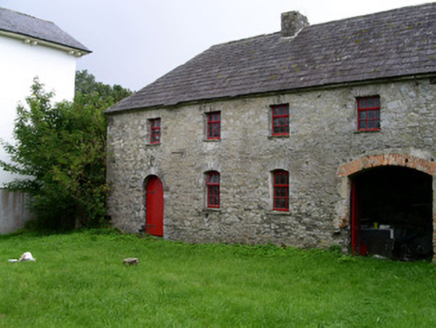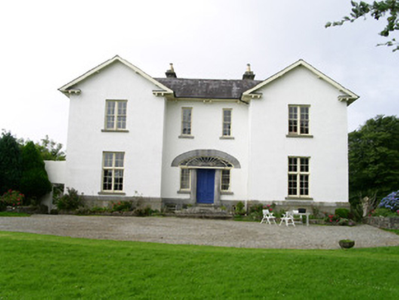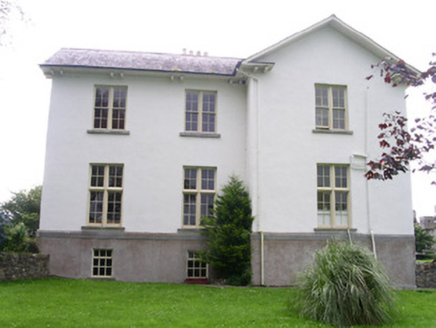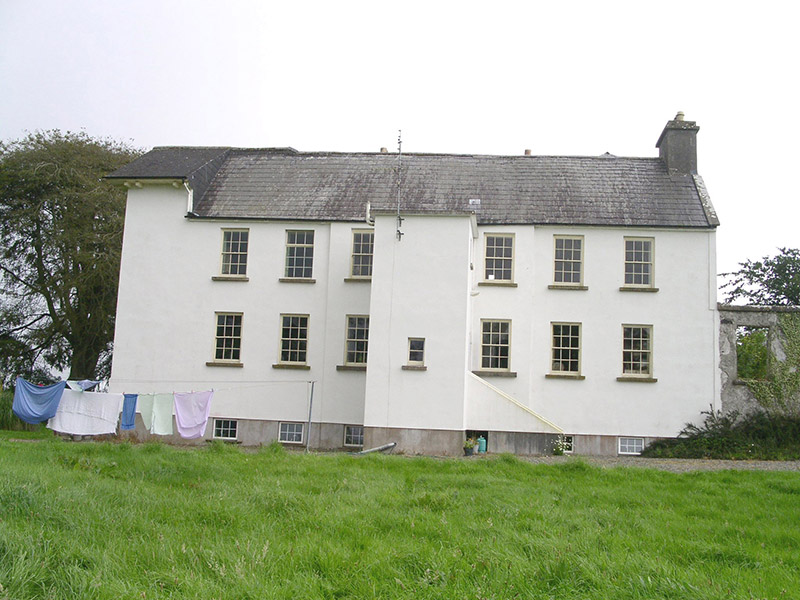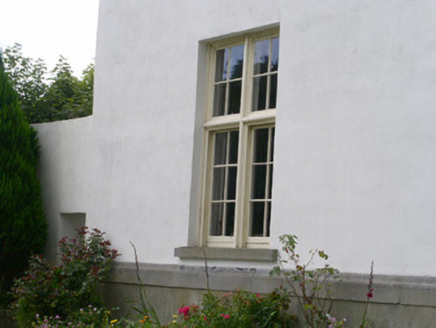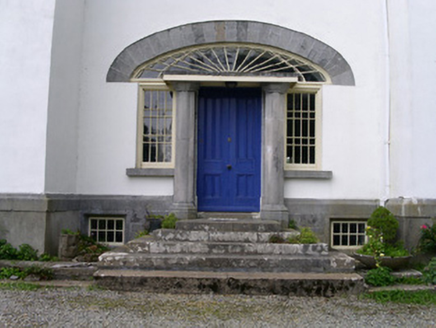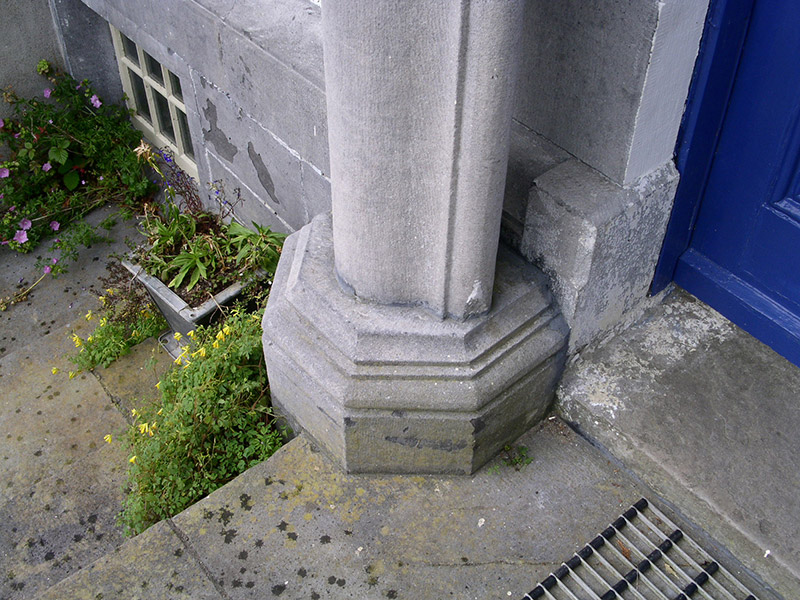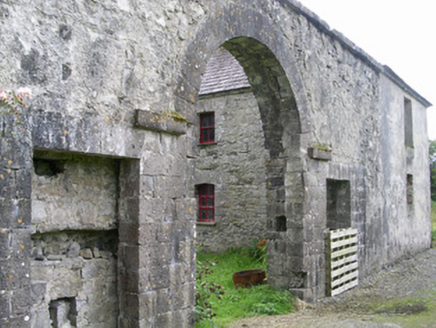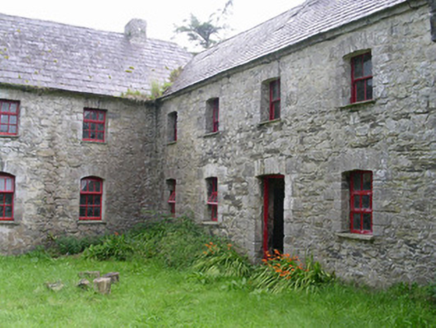Survey Data
Reg No
32402203
Rating
Regional
Categories of Special Interest
Architectural, Artistic
Original Use
Country house
In Use As
Country house
Date
1800 - 1840
Coordinates
129086, 325942
Date Recorded
17/08/2004
Date Updated
--/--/--
Description
Detached four-bay two-storey-over-basement rendered double-pile house, built c. 1820. Rectangular on plan with forward-projecting, broken-bed pedimented, end bays to front elevation, and, similar breakfront to east elevation. Two-storey flat-roofed return to rear (north) elevation. One-and-a-half storey stone outbuildings around south and west sides of courtyard to west of main house. Pitched slate roof, plain clay ridge tiles, ashlar stone corbelled chimneystacks, half-round uPVC gutters on projecting eaves with painted timber sheeted soffits carried on plain paired corbels, painted timber bargeboards to broken pediments. Simple stone corbelled eaves to north pile. Painted smooth-rendered walls, ashlar moulded raised plinth to south and east elevations. Square-headed window openings, limestone sills, painted mullioned-and-transomed small-pane timber sash windows to south and east elevations, six-over-six sashes to north and west, timber and uPVC casements to basement. Ashlar limestone entrance doorcase set below wide elliptical-headed voussoired arch with, unusually-profiled, columns flanking painted timber panelled door, elaborate sunburst fanlight over, multi-pane sidelights, ashlar steps. Approached by driveway from south-west, landscaped garden with mature trees, castle and mill to north-west.
Appraisal
The south pile of this unusual, and very pleasing, house appears to have been added to an older, eighteenth century, block. It displays some fine craftsmanship in the stonework to plinth and doorcase and in the, splendidly-wide, fanlight. Original fenestration survives and is especially important on the south and east elevations. The wonderful rubble stone farmyard to the west sits comfortably with the composition and historic associations with the, now derelict, castle and corn mill to the north-west cannot be ignored.
